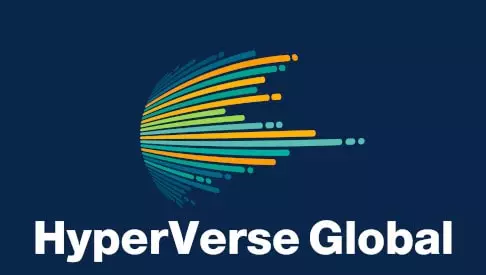Data Validation in Conform Zone
In the conformed zone of an enterprise data lake, data validation is typically performed to ensure the quality and consistency of the data. This can include checks on the structure, format, and content of the data.
Some common data validation checks that may be performed in the conformed zone of an enterprise data lake include:
- Structural validation: This involves checking that the data is in the correct format and meets any specified requirements for structure, such as data types, field lengths, and null values.
- Format validation: This involves checking that the data is in the correct format, such as ensuring that dates are in the correct format and that numerical values are properly formatted.
- Content validation: This involves checking the content of the data to ensure that it is accurate, complete, and consistent with other data sources. This can include checks for duplicates, missing values, and out-of-range values.
- Integrity validation: This involves checking that the data is consistent with other data sources, such as ensuring that foreign key values match primary key values in related tables.
It is important to perform these types of data validation checks in the conformed zone of an enterprise data lake to ensure that the data is reliable and can be used effectively for downstream analytics and reporting purposes.
Data Curation in Curation Zone
Curated data refers to data that has been carefully selected, organized, and annotated to be useful for a specific purpose. There are many different ways that curated data can be used, depending on the nature of the data and the needs of the user. Some possible uses of curated data include:
- Research: Curated data can be used to support scientific research by providing a reliable source of information for studies.
- Business intelligence: Companies can use curated data to gain insights into market trends, customer behavior, and other key business factors.
- Decision-making: Curated data can be used to inform decisions in various settings, such as policy-making, product development, and resource allocation.
- Education: Curated data can be used to teach students about a particular topic, or to demonstrate how to analyze and interpret data.
- Data visualization: Curated data can be used to create charts, graphs, and other visualizations to communicate information more effectively.
- Data mining: Curated data can be used as a starting point for data mining, which involves using algorithms to discover patterns and relationships in large datasets.
- Machine learning: Curated data can be used to train machine learning models, which can then be used to make predictions or recommendations based on the data.
In the curated zone of an enterprise data lake, data is enriched for a specific purpose. Data enrichment refers to the process of adding additional data or information to the data that is stored in the zone. This can involve combining data from multiple sources, adding calculations or derived fields, or adding additional metadata to the data.
Some common types of data enrichment that may be performed in the curated zone of an enterprise data lake include:
- Data blending: This involves combining data from multiple sources, such as combining sales data from different regions or channels.
- Data modeling: This involves creating a logical model or structure for the data, such as creating a star schema or dimensional model, to facilitate analysis and querying.
- Data enrichment: This involves adding additional data or information to the data, such as adding geographic data to sales data or adding customer demographic data to transaction data.
- Metadata enrichment: This involves adding additional metadata to the data, such as descriptions of data fields or sources, to make it easier to understand and use the data.
Data enrichment in the curated zone is typically performed to support specific business needs or projects, such as creating reports or dashboards or supporting data-driven decision-making. The enriched data is often used for downstream analytics and reporting purposes.
Data Loading to the destination system
There are several destination systems that can be used to load transformed data for statistical analysis, training machine learning models, or visualization. Some common destination systems include:
- Relational databases: Relational databases, such as MySQL, Oracle, or PostgreSQL, can be used to store transformed data that is intended for statistical analysis, machine learning training, or visualization. The data can be easily accessed and queried using SQL, and tools such as R or Python can be used to perform statistical analysis or build machine learning models.
- Data warehouses: Data warehouses, such as Amazon Redshift or Google BigQuery, can be used to store transformed data that is intended for statistical analysis, machine learning training, or visualization. These systems are optimized for fast querying and analysis of large datasets and can be used to support advanced analytics, machine learning, and visualization applications.
- Cloud-based data platforms: Cloud-based data platforms, such as Google Cloud Platform or Microsoft Azure, offer a range of services and tools that can be used to store transformed data for statistical analysis, machine learning training, or visualization. These services and tools include data lakes, data warehouses, data processing, and analytics tools, machine learning platforms, and visualization tools.
- Machine learning platforms: There are several specialized machine learning platforms that can be used to store and process transformed data for machine learning training. These platforms, such as AWS SageMaker or Google Cloud AI Platform, provide a range of tools and services to support the development and deployment of machine learning models.
- Business intelligence and data visualization tools: Business intelligence and data visualization tools, such as Tableau, Power BI, or Amazon QuickSight, are designed to allow users to create a wide range of interactive visualizations and dashboards to understand and communicate insights from their data. These tools can connect to a variety of data sources, including databases, data warehouses, and file storage systems, to access and visualize transformed data.
- File storage systems: File storage systems, such as Amazon S3 or Google Cloud Storage, can be used to store transformed data that is intended for statistical analysis, machine learning training, or visualization. The data can be accessed and processed using tools such as R or Python, or it can be ingested into a data warehouse or machine learning platform for further analysis and modeling. It can also be accessed and visualized using business intelligence and data visualization tools.
Overall, the choice of destination system for storing and processing transformed data will depend on the specific requirements of the analysis, training, or visualization, including the type and volume of data being processed, the performance and scalability needs of the pipeline, and the budget and resources available.



Comments are closed